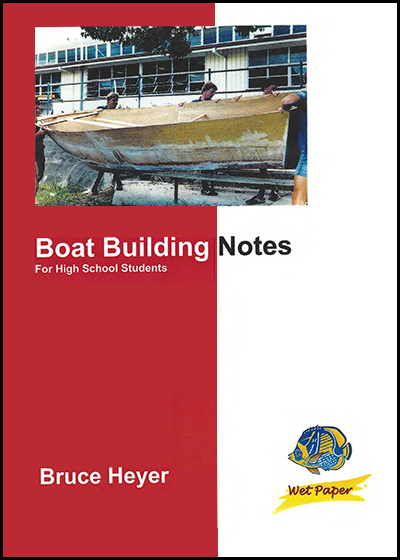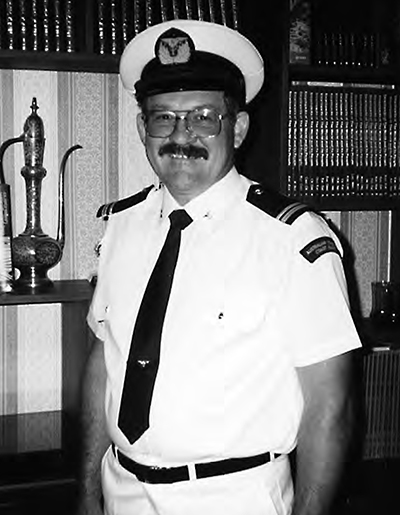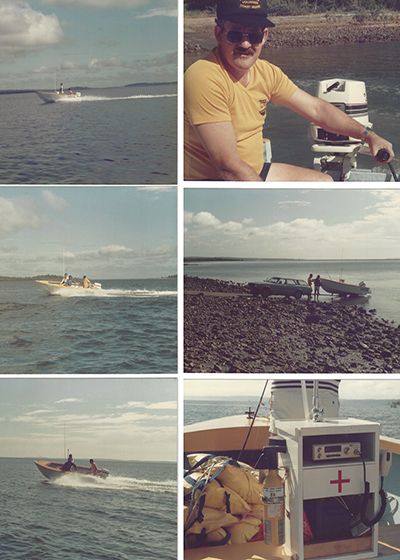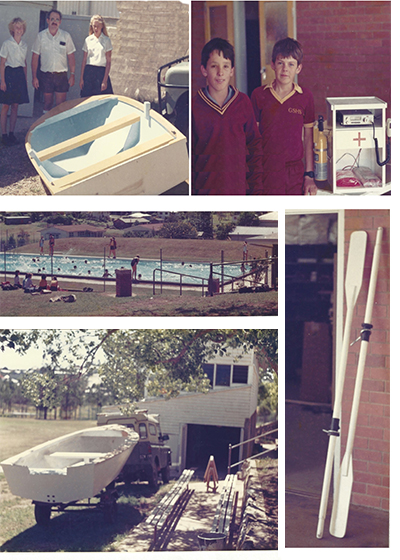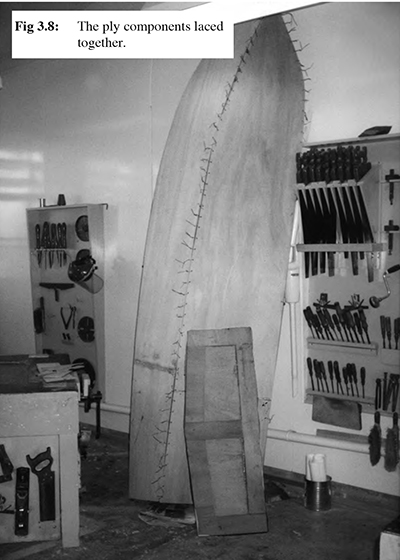Boat building school projects

ISBN : 978-1-86283-226-8 (2025 E Pub)
Published Date : 01 June 1990
Product Code : F 39P
Format : Free PDF for download
By Bruce Heyer
Wet Paper publications non-commercial school licence
The publisher and author/s of this pdf file grant to the school a revocable, non-exclusive, non-transferable right and licence to use the content, exercises, lab and field work lesson notes within the school for educational purposes only.
Yearly record keeping
To ensure fair payment is made to collecting societies, educational institutions are to record the digital ISBN above.
- To do this go to the school office and ask the IT department or whoever looks after digital book licences to record the ISBN in the school digital library licence catalogue.
Copyright
Except as permitted by the Copyright Act 1968 (Cth), you may not reproduce any of the contents of this publication, without the written permission of the copyright owner.
The title to, and intellectual property rests with the publisher's author/s, illustrators, photographers and design consultants and nothing in the agreement should be construed as transferring those rights to the school.
Educational exemption
There are exemptions under the Act that allow educational and government use of text, images and music scores for educational purposes.
These exemptions are in Part VB of the Copyright Act 1968 (Cth), where you are entitled to reproduce or communicate 10% of the words or one chapter from this file for educational use within your school. If you wish to reproduce or communicate MORE than 10% contact the copyright owner.
For more information, see www.copyright.com.au and www.copyright.org.au.
Teachers Information
About the Author
Bruce Heyer, a carpenter, joiner and teacher of thirty years built his first boat as a lad of fourteen, there have been many since then - both power and sail.
He began teaching Manual Arts in 1970, and Marine Studies in 1984 from a program he developed in 1977. This program naturally included boat building. His boat building skills has helped Gympie State High School procure its first four boats which have given very good service. In 1989 he spent time working in the Kawana factory of Kevlacat where he helped prepare for sale, a 17 ft. vessel which was later voted “Boat of the Year”.
Bruce, a graduate of Brisbane College of Advanced Education has been on a number of panels and committees for the Board of Secondary School Studies, for many years in both Manual Arts and Marine Studies Areas and was a member of the “Evaluation Committee” which is examining for the Board of Secondary School Studies, a syllabus that has been prepared by the Marine Studies Teachers of Queensland.
He was a foundation member of the “Marine Educators Society of Australasia” and in 1990 was President of the Wide Bay M.E.S.A.
Bruce took an interest in "all things nautical” including safe boating. To this end, he was a member of the Gympie-Tin Can Bay Coast Guard Flotilla where he has served as Staff Officer for two years, Public Relations Officer and Rescue Crew with the rank of Coxswain.
His notes were used in the design of Marine and Aquatic practices and are still referenced to in the 2020 Aquatic Studies syllabus.
Sadly Bruce passed away this year (2020) from a long battle with cancer.
MTAQ and MESA will remember Bruce for his wonderful networking skills and his passion for the subject he loved so much. We will miss him.
Support Material
Qld Aquatic Practices syllabus
https://www.qcaa.qld.edu.au/senior/senior-subjects/sciences/aquatic-practices/syllabus
Elective topic C3: Boat building and marine engineering;
Different vessel designs are suited to different situations.
• major hull types - displacement and planing
• different hull shapes for different purposes, e.g. punt for sheltered estuary waters, deep-v hulls for open water
• materials for vessel construction are dependent on purpose, e.g. rubber, alloy, wood, fibreglass, steel
Boats are designed and constructed using a variety of materials and techniques.
• vessel or model construction to scale plans
• application of tools and materials to fabricate vessel or model
• design testing and modification
There are different propulsion systems and types of marine engine installations for vessels.
• uses of different marine installations, e.g. inboard, outboard, stern-drive and jet
• principles of mechanical and non-mechanical boat propulsion, e.g. powered and non-powered craft, such as traditional sailing vessels
• factors influencing selection and use of particular propulsion systems
Contents
Chapter 1 Basic boat building materials
Chapter 2 Boat building terms
Chapter 3 Building a simple dinghy using the stitch and glue method
Chapter 4 Building boats by other methods
Index


